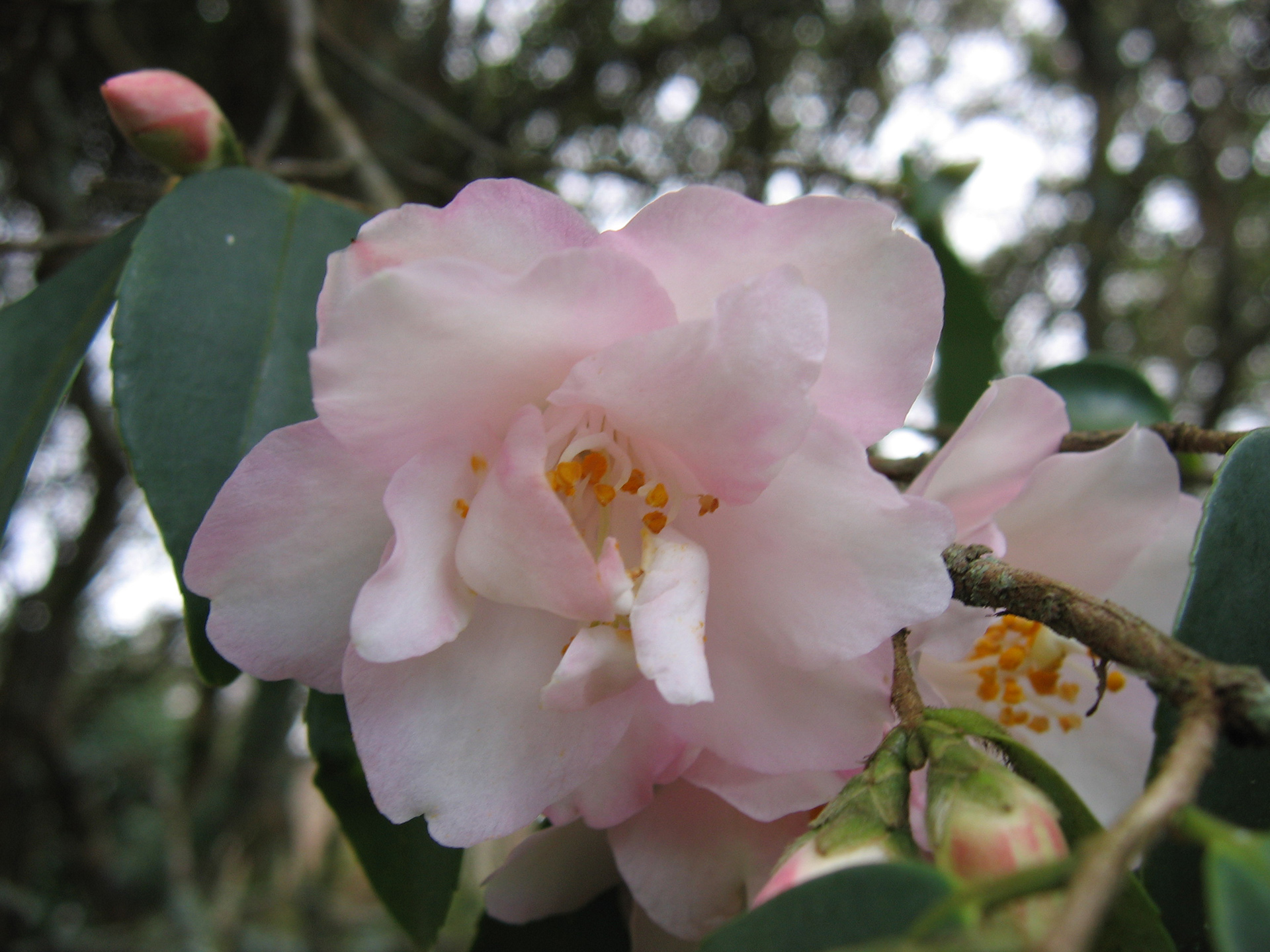Physical characteristics
A small-leaved,
Flowers and foliage
Produces small single to semi-double pale-
Preferred site
Most camellias generally need to be grown in partial or dappled shade. However, the variety 'Wirlinga Princess' is more sun-hardy and flourishes best in free-draining, slightly acidic soil (pH 5.5-6). It likes moisture in spring and summer but hates sodden soil, which can rot roots, so they must have good drainage. Plant where the flowers will not get
In cultivation, camellias usually take two to three years to become established, but will then improve in bloom quality and quantity with each passing year. Plant in positions shelte
Preparation for planting
Always choose healthy, well-grown
Before planting, ensure the root ball is saturated and remove the planter bag or pot with minimal root disturbance. Trim any broken roots and plant at the same level as in the container. Dig a hole twice the diameter of the root ball, press in and water once planted. As soil is placed in the prepa
Maintenance tips
Mulch
Camellias growing in acidic soil will benefit from an application (50g/m2) of dolomite lime every three years. In spring, apply an organic mulch to keep surface roots cool and moist through summer. Water in
Large camellias will re-grow from bare wood after heavy pruning. However, light
Pests and diseases
In spring, new growth is susceptible to attack by leaf-roller caterpillars. These can be removed by hand. Also, check for aphids and the nymph stage of thrips. Camellia petal blight is becoming a problem in the Auckland region, affecting many late-flowering Camellia hybrids and cultivars. This blight causes the flower to rot from the centre outwards, leading to premature flower drop. Any flowers showing symptoms should be removed immediately.
Location at Auckland Botanic Gardens
Camellia Garden
Interesting facts and tips
Camellia gardening in China goes as far back as the ninth century. These
Camellia vary from low-growing, spreading
Camellia are well suited to growing in Auckland conditions.




.jpg?width=1200&height=1200&v=1d4024dceb89e50)

.jpg?width=1200&height=1200&v=1d5569224d63650)
 .jpg?width=1200&height=1200&v=1d4024df6ce2770)
.jpg?width=1200&height=1200&v=1d55676a892f2b0)
 .jpg?width=1200&height=1200&v=1d4024e3b65f7f0)